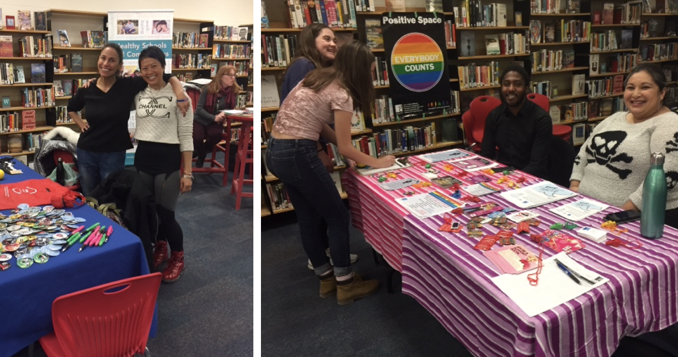
By Enid Wray, Trish Drynan, Adrienne Kennedy, and Caroline Schoales
Teacher-librarian leaders from the Toronto District School Board (TDSB) and community partners share effective strategies for fostering wellness in the school library learning commons.
Our starting point is that wellness is a mindset. We make no claims to be experts. There’s nothing revolutionary in what we’re sharing. Our intent is solely to pull together best practices from a number of secondary school libraries providing a package of ideas ready to implement in your own school libraries. Further, we really want to start a conversation, and create a space, or forum, for sharing ideas because frankly, that’s what we teacher-librarians do best… we share.
Please enjoy what we have to share: a representative sampling of things that have worked for each of us and some of our colleagues, in our schools.
When we think about wellness, when we frame our conversation, we most often think about the ‘big-ticket’ items… the obvious things that foster wellness and a culture of wellness. However, we know that there are many other things, little things that we do that may or may not be labeled or even understood as contributing to wellness, but they do all the same.
Everyone needs to find their own starting point. You might want to start by asking yourself the following questions:
- What does wellness look like at my school?
- What is it about my school that supports wellness?
- What is it about my school that does not support wellness?
- What is it that we need to, or want to, accomplish?
Our suggestion for how you answer these questions is that you engage in a little mental imagining and take a virtual field trip around your school. List everything that takes place within your school and school community that supports wellness. This list should include both curricular and extracurricular activities. Our bet is that there’s a lot of really good stuff already going on in every school. Indeed we expect you’ll be surprised just how much is already happening when you stop and think about it.
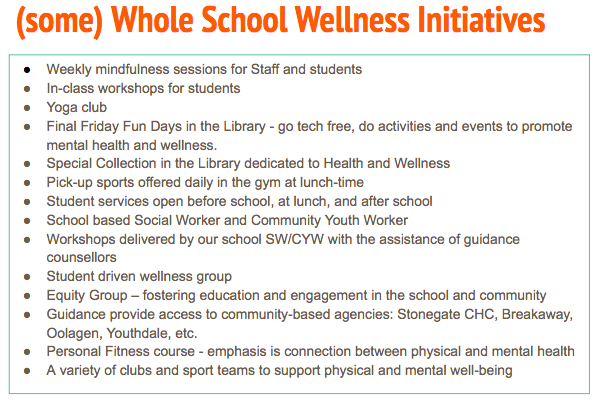
Creating this inventory will allow you to see gaps, so you can start dreaming about what else you could be doing. Perhaps most importantly though, it will allow you to share all of the positive things that are already happening with your staff and your administration. When people see how much they are already doing to support wellness thinking about how to support it further becomes less daunting. Creating the inventory allows people to see what a supportive environment you already have and let’s face it, often, people in one part of the building don’t know what’s happening in the other parts of the building, so it also creates a space for conversations to be had.
STRUCTURE
Structure is your first, and most important, consideration. Wellness is a mindset. Wellness is holistic. Wellness is all-encompassing. Wellness has to be embedded in everything you do in your school. For that to happen, there has to be buy-in from everyone. Wellness has to be valued from the top all the way down. Your wellness framework has to bring everyone within the school community – administration, teachers, students, support staff, community workers, parents (and any others) – into the fold. This allows for constructive collaboration and for the fostering of leadership and team-building skills.
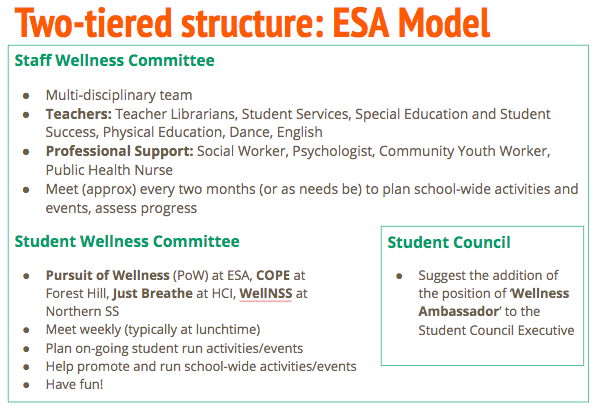
Most of our TDSB schools have fairly active student wellness groups, or committees. These student committees plan and run their fun activities and events throughout the school year. At the Etobicoke School of the Arts (ESA) there was an additional layer on top of this. ESA has a Staff Wellness Committee, a multidisciplinary team planning school-wide activities and events intended for whole grade or whole school participation. This group also assesses progress and keeps an eye on the big picture. The student group runs parallel to this helping to run the whole school activities planned by the staff, as well as their own activities and events.
The next step in the plan at ESA is to create a position of ‘Wellness Ambassador’ on the student council executive. This would signal the importance of wellness within the school community and also allow for access to funding through the Student Council budget.
SPACES/FACILITIES
Another important piece, if you can find the space, is to have one or more dedicated wellness spaces within the school. Ideally this would be in the library but it doesn’t have to be. The sole purpose of the space is to be a wellness retreat. This space doesn’t have to be big, nor does it have to be fancy. What it does need to be is a single purpose environment with clearly articulated expectations. Have a team – staff, students, others – put some time and energy into decorating the space and turning it into a retreat. The room should be a place for quiet calm contemplation, a place for students or staff – anyone who needs it – to take a timeout to return themselves to their calm center of being.

PROGRAMMING: Big Ticket Items
Now that you’ve got a structure in place, and perhaps a space, it’s time to turn to your messaging.
- How do you send out the message that you care about the mental health and well-being of everyone in the building?
- What is it that you already do that invites people into the conversation?
- How do you already de-stigmatize mental health challenges in your community?
- How do you message that it’s okay to not be okay?
- What could you be doing to (better) communicate that message?
- How can you let anyone who enters your space – physically and digitally – understand this?
Consider planning a Wellness Morning or a Wellness Day. This is essentially a mini-conference targeted at a specific group of students. In the case of ESA this target group was all incoming grade 9s. Plan for a keynote address and some breakout workshop sessions: the more active and participatory the better. Plan for this event near the start of the school year so that from the moment these new students walk in the door they can see that you are open to having honest conversations about mental health and wellness. Find speakers from outside your school, or even better, from within your school community – students and adults who have struggled themselves and are prepared to share. Have them share their stories. Make those personal connections and send the students away with concrete ideas and strategies, as well as knowing who in the school they may approach.
Consider holding a Wellness Fair. This could happen during a planned Wellness Week, or anytime in advance of periods in your school calendar which are bound to be stressful for students. Invite outside agencies to come in and set up an information table. If you have students who are strong enough to do so it works especially well to have students who have worked with the agency sitting with the agency staff at their table. It makes the experience that little bit less intimidating for students to go up and ask questions.
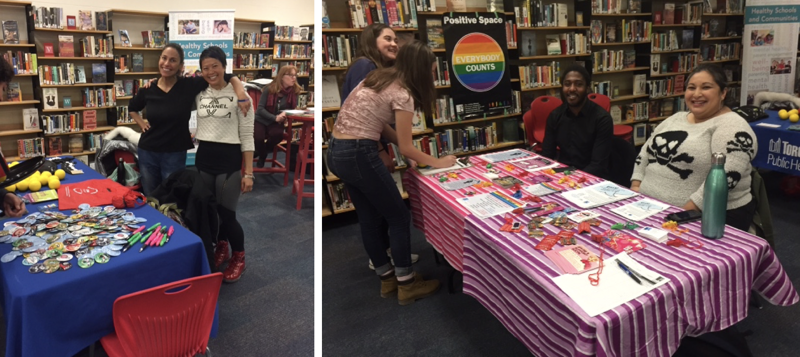
And speaking of Mental Health weeks, or Wellness weeks, go big and plan for activities every day. Make it fun. Make it celebratory. Provide opportunities for students to step out and take an intentional break from their daily routine at school. Make your activities public, strategically locating them in areas of the school that students can’t avoid.
- Take the opportunity to engage in conversations about things like time management.
- Emphasize the need for sleep with a Pajama Day movie event.
- Provide students with multiple healthy outlets for reducing their stress.
- Remember how good it felt to pop balloons when you were younger? Pop away!
- Set up a tea station (it could serve hot chocolate also).
- Your grandmother was right when she insisted that a good cup of tea goes a long way. It can be just the icebreaker you need to find the way into that conversation with a student.
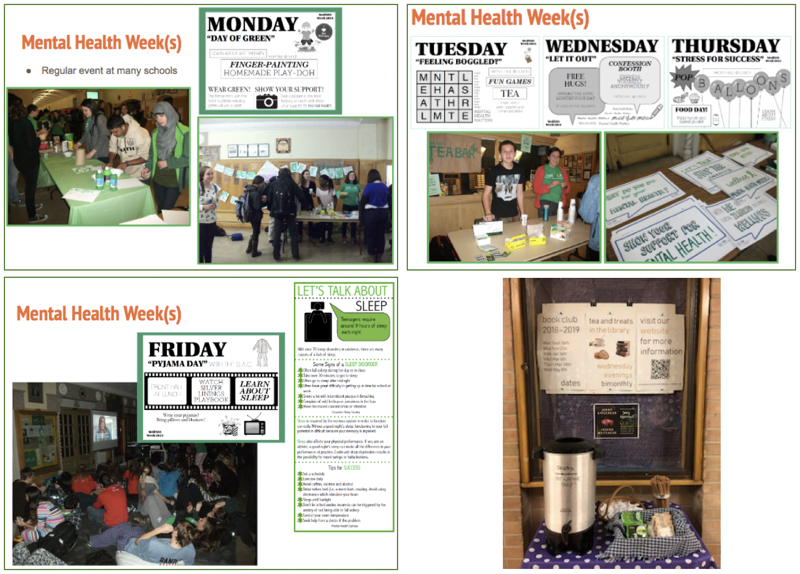
Take your Mental Health Week plans to the next level. Consider getting really radical and adjusting your school year calendar. RH King Academy in Toronto starts their school year a few days early, in August, in order to find the necessary days to build in a much needed and appreciated wellness break during the high-stress month of November.
Consider creating a public space or public forum for students to share their personal stories. This could work as a project of the library or in conjunction with the English department or Student Services. Help students find their voice and learn to write about their struggles, their experiences. Where students feel comfortable, videotape them telling their story with the clear intent that it will be shared with others. Create your own website for your community as a gathering place for sharing these stories and encouraging students to talk about their experiences and build resiliency. In a similar vein, start your own TedTalk Club, and with enough interest you can run your own Ted event. Taking your students’ stories to these kinds of next level is hugely empowering. It also provides an opportunity for kids who like to work behind the scenes – tech club kids – to get involved and find their place.
See it in action:
ESA Voices of Victory
Martingrove CI Tedx2019
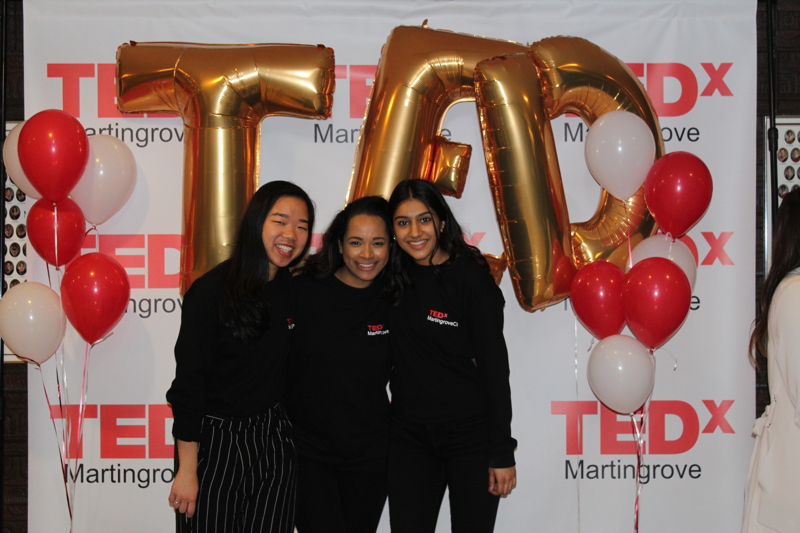
PROGRAMMING Smaller ticket items

Plan for special days. Take one day a month to go tech-free in the library at lunch. Serve tea. Play games. Do arts and crafts. Serve healthy food. Instill an appreciation of the benefits of turning off as well as the value of play. Extend it beyond the lunch hour… make it the whole day. Have a team at the main doors to greet students in the morning, to make them feel welcome, feel special. Have a special announcement over the PA in the morning. There can never be too many reminders!
Pick a color for your wellness team. Get together and make t-shirts. Have your team wear their t-shirts on the special days and encourage the rest of the school to wear the same color, in the same way that pink shirt day and orange shirt day define their issues. Make your color your message about reducing stigma and the importance of looking after our mental health.
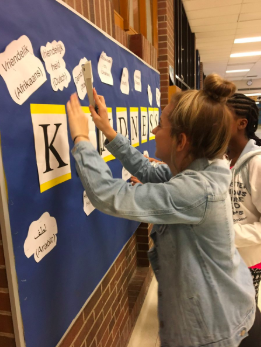
Celebrate special days on the calendar. For world kindness day create a wall of kindness. Have students write messages. Set yourselves up in a prominent location within the school. Challenge students to think about what they’re grateful for, to think about the small acts of kindness to which they have been on the receiving end. Challenge them to be the bearers of small random acts of kindness in their daily lives.
Plan activities to message the relationship between good physical health and good mental health. Work with your public health department, especially if you have a sexual health nurse available to you as a resource. Consider a ‘Candies and Condoms’ fundraiser around World AIDS day. Decorate plain Kraft paper lunch bags, stuff them with candies and condoms. Be sure to also include pamphlets with everything students need to know about safe sex, STIs and HIV/AIDS, condom care and consent.
Take Valentine’s Day back from commercial card companies. Turn it on its head. Make it about self-love and self-care. Get crafty. Facilitate students expressing themselves positively. Try having your students write positive messages on pre-cut card stock, string it together and create your own ‘Peace Flag.’ Hang it prominently.
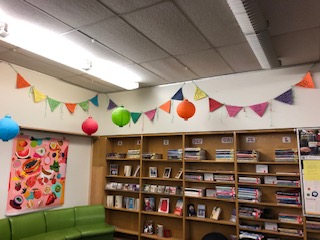
Challenge students to turn off their social media for 24 hours. Challenge teachers to go device-free in their classrooms for that one day. Go tech-free in the library for the lunch hour. Make little vinyl stickers for students to put on their phone screens as a visual reminder to not go there. Follow up with students afterwards to find out how they fared without social media for 24 hours. Our experience suggests that you will collect overwhelmingly positive responses. Indeed, some students will decide not to go back to social media.
Host a drop-in lunch club with a school social worker or community youth worker. Make it an informal drop in session, a chance to connect one on one, a chance to connect with other students. These sessions can reduce feelings of isolation, as well as model, support and encourage healthy eating habits.
Host community luncheons. Pull together a team of volunteers – staff, students, parents, grads – to cook and bake. Bring the community together for a shared home-cooked meal. We strongly recommend that you do this on a Monday so people can cook on the weekend. Charge a small admission fee and donate it to a local charity, or turn it back into wellness programming. Remember though… let nobody go hungry!
Host holiday arts and crafts in December to celebrate Diwali, Hanukkah, Christmas, and Kwanzaa. Each of these holidays are characterized by twinkly lights and shine and sparkle. Provide materials for students to make little crafts, ornaments, or greeting cards.
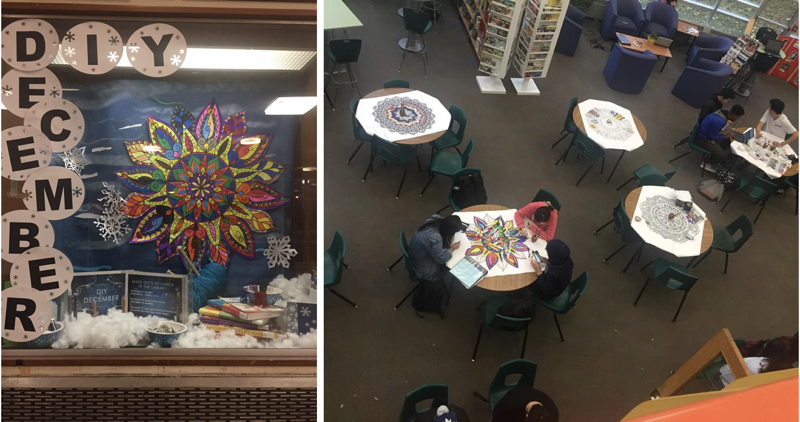
Make the connection between the environment, environmental health and mental health. Each year in early spring, Parkdale Collegiate in Toronto holds an “Eco Mental Health Walk” where the entire school goes out for a community walk. Staff and students amble through the neighbourhood and along the lakeshore, gloves and garbage bags in hand. They celebrate the coming of spring by cleaning up the neighbourhood and spending some time together engaging in their natural environment and taking in some fresh air.
Take time to be mindful. Build a mindful minute into your school or classroom practice. Offer mindfulness and/or yoga before school, or during the lunch hour. Take it outside in the nice weather! We need to be seen to be modelling the practice of stress reduction. We must create the expectation that it should be part of everyone’s daily routine. With your administration on board allocate some of your staff meeting time to wellness sessions for staff. Build in 10 minutes of mindfulness, or chair yoga, into staff meetings or dedicate entire meetings to this shared experience. Show staff who may not already engage in the practice themselves how simple it can be and provide them with practical ideas they can use in the classroom for themselves and/or their students.
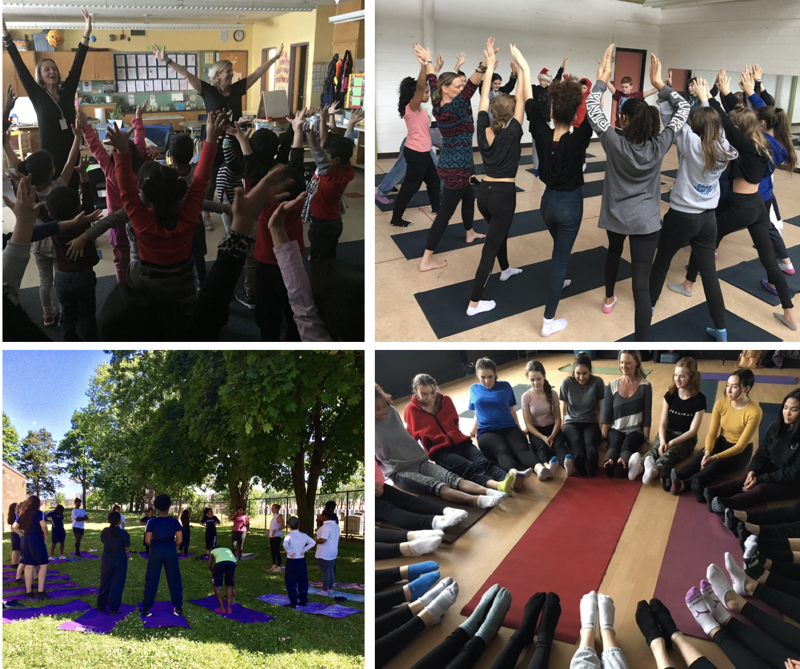
In as much as libraries are curricular spaces, keep fun and games front and center as well. Host student clubs like Dungeons & Dragons, or the Animé Club. Run chess tournaments. Have Jenga, jigsaw puzzles and coloring stations available. All of these activities require the brain to work differently, encouraging social collaboration. These activities can help to produce a calmer state of being.
THE LITTLE THINGS
Central to libraries as learning commons is the welcoming experience. Message this welcome with information, colour, organization and design. As soon as that door opens, your students should know that this is a positive space that supports mental health and wellness.
If you don’t have the budget for big ticket renovations and changes, then let subtle little things speak volumes for you, things like:
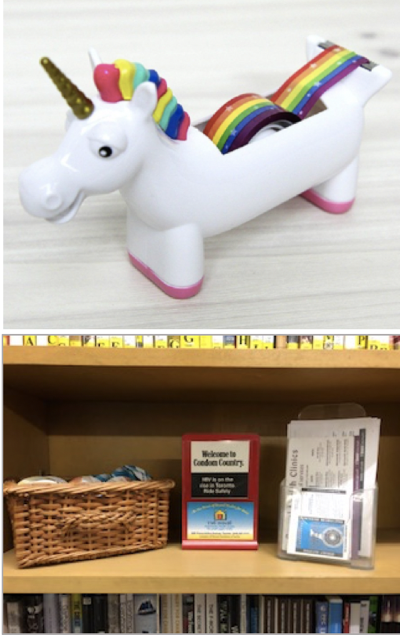
- the rainbow tape dispenser at the desk inside the door
- the free condoms available for self-serve anytime
- the fish tank
- the happy lights
- the resident library teddy bear available for free hugs anytime
- the tea trolley that can be repurposed for hot mulled cider in the winter or hot chocolate anytime you wish
- the special collection of wellness books and resources within the library, including titles on subjects like yoga, meditation, mindfulness, nutrition, and more
CURRICULUM CONNECTIONS
When we look carefully, there are lots of places across the curriculum where wellness can be promoted. The opportunities are there. It’s a matter of recognizing that teachable moment, of making that connection.
The hardest part is figuring out where and when to start. Start at the beginning, especially as you set the tone in terms of classroom expectations and supports for students. Acknowledging wellness supports these efforts. Encourage the teachers in your school to build in wellness moments, or dedicated activities, to support students’ resilience.
Many Social and World Studies & Humanities course expectations reference wellness and wellness-related content. Courses without explicit wellness-related expectations may incorporate wellness-related learning in accordance with many recent Ministry of Education policies and programs. A sampling of these expectations, from the Ontario curriculum, are noted below.
- Gr. 11, Gender Studies, (HSG3M)
- C2. Local and Global Challenges: analyse a range of social, political, economic, and environmental issues relating to gender in Canadian and global contexts.
- Gr. 11, Equity, Diversity, and Social Justice,(HSE3E)
- A1. Exploring: explore topics related to equity, diversity, and/or social justice, and formulate questions to guide their research.
- Gr. 12, Equity and Social Justice: From Theory to Practice, (HSE4M)
- A1. Exploring: explore topics related to equity and social justice, and formulate questions to guide their research;
- Gr. 12, World Cultures, (HSC4M)
- B1. Understanding Culture: demonstrate an understanding of the elements and functions of culture and of the nature of cultural influence;
- Gr. 9/10, Exploring Family Studies (HIF1O and HIF20)
- A1. Exploring: explore topics related to individual and family needs
- and resources, and formulate questions to guide their research;
Consider producing a periodic newsletter dedicated to promoting wellness. Wellnews is a wellness-focused resource developed by and for teachers in the Toronto District School Board. Wellnews offers perspectives from the front lines. Acknowledging that this work can be exhausting, emotionally demanding, and even lonely at times: Wellnews invites readers to join in a broader conversation about the realities of this work, crossing both disciplinary and grade boundaries in order to share ideas and build a network of support.
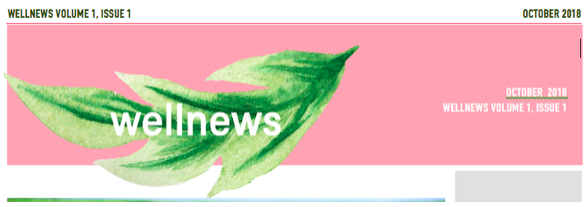
The TDSB team responsible for Wellnews also created a series of wellness posters. Consider creating your own posters, customized to respond to your local school needs. Involve students in the process from start to finish. Create yet another avenue for students to use their voice and engage in the conversation.
COMMUNITY PARTNERS
Seek out local community partners to help develop and maintain your program. Partners whose staff are fully trained in teaching yoga, mindfulness and stress management strategies can, for a reasonable cost, help to develop programs, initiatives and training for both students and staff alike.
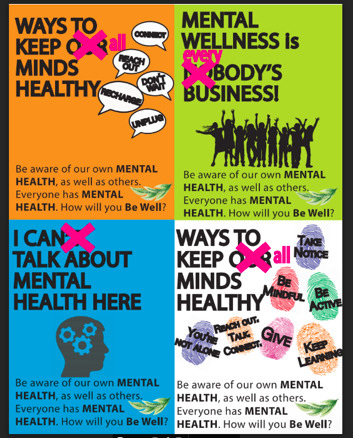
Teachers at the Etobicoke School of the Arts in Toronto started working with Tools for All Teens five years ago. Today, Tools for All Teens is an approved vendor working with many schools throughout the board. Tools for All Teens is a self-empowerment program promoting school-wide wellness, teaching staff and students lifelong stress management tools including yoga, mindfulness, and journaling. Staff at ESA participate in such training twice a year during PLC sessions. Students participate regularly during classroom based sessions. Tools for all Teens will also help schools to design and implement wellness workshops and teacher training programs so they can become self-sustainable with respect to their wellness programming.
Staff at RH King Academy work with the Toronto-based charity Mindfulness Everyday, also an approved board vendor. Mindfulness Everyday worked with their Grade 11 Leadership classes, running 12-session mindfulness training workshops. Additionally, interested teachers take part in an 8-session after school training program. Grade 9 mentor teachers participate in a half day of mindfulness training each year, as part of the school’s commitment to professional development, and they in turn deliver 6 one-hour sessions to all Grade 9 students. The school also partnered with the Department of Psychology at the University of Toronto (Scarborough) on a study in “positive psychology”, where Grade 10 teachers and students participated in a program of “Strength Based Resiliency Training.” The professor in charge of this study also ran a workshop for parents.

Staff at Lester B. Pearson Collegiate have the opportunity to take part in a Mind@Ease workshop during their school Wellness Week. Mind@Ease is a mindfulness and brain entertainment program. It involves state-of-the-art multi-layered binaural sound technology, which allows participants to meditate much more deeply. Mind@Ease was created by provincial youth outreach worker and meditation facilitator, Morgan Smith. Morgan has been involved in brainwave technology and mindfulness/meditation facilitation for over 16 years, including facilitation at mental health symposiums and at schools.
See it in action:
Tools for all Teens
Mindfulness Everyday
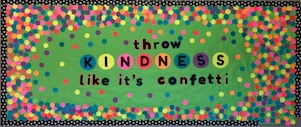
Check with your board to find out whether there are existing community partnerships you can tap into, or reach out and make your own connections. Start by tapping into available resources within your own school community. That’s what we did, and this is where it got us.
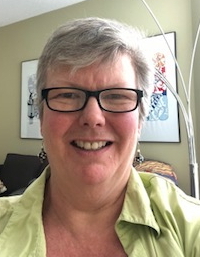
Happily retired as of June 2018, Enid Wray was the Assistant Curriculum Leader of Library and Technology Integration at the Etobicoke School of the Arts. While she misses seeing her colleagues and students every day, Enid is busier than ever and has no idea how she ever found time to work full time.
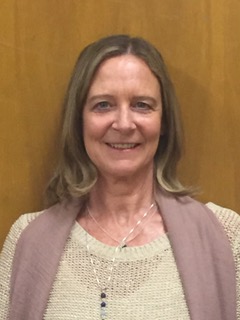
Trish Drynan is co-founder and co- director of Tools for All Teens. Trish holds a degree in psychology and sociology and has been a life coach, focusing on health and wellness for over 15 years. She is a certified yoga and mindfulness instructor and practitioner of over 23 years.
Trish has designed several workshops focusing on mindfulness,yoga and other stress management modalities.Tools for All Teens has been an approved partner of the TDSB for over five years. They have worked with hundreds of students and educators promoting school-wide wellness and beyond.
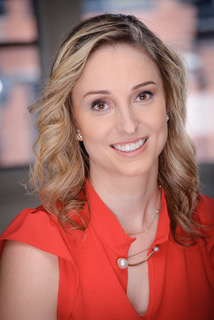
Adrienne Kennedy is the current Assistant Curriculum Leader of Library and Technology Integration at Etobicoke School of the Arts. She has spent the past two summers working on wellness guides and curriculum connections with the TDSB. In her spare time, she likes to dance, visit top restaurants, work on her next business plan and travel the world with her amazing husband.

Caroline Schoales is a teacher-librarian at Humberside Collegiate Institute in Toronto. She has been with the TDSB for 19 years, teaching mainly in the area of French Immersion and History. Her focus in the library learning commons has been on developing a student wellness room and continuing to develop and improve on the many wellness initiatives in her school.
With additional contributions from TDSB teacher-librarians Rebecca Green, Deborah Haines, Brian Wilkinson, Julia Zwaan, Janice Feller, Tina Opare and Tanaz Anklesaria.